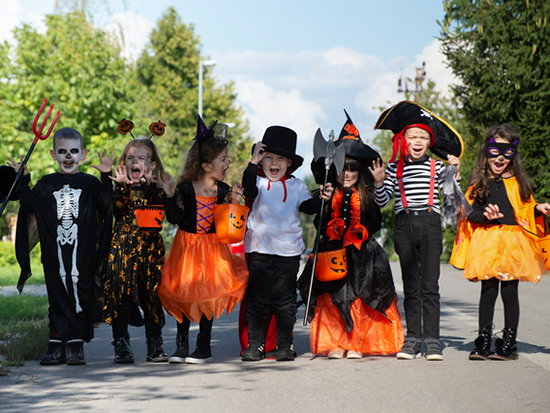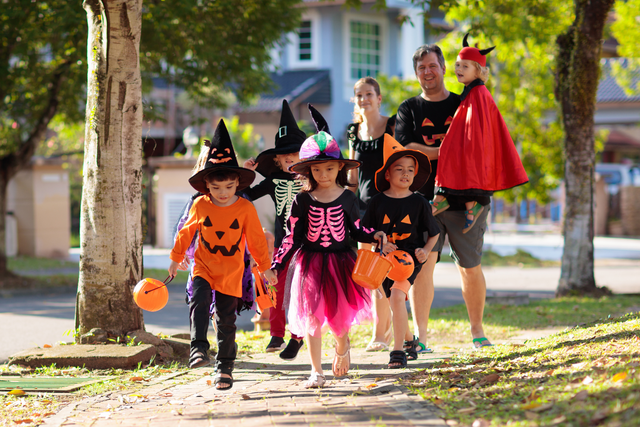
While Halloween offers fun-filled activities for families, it also raises significant safety concerns, especially related to traumatic brain injuries among trick-or-treaters.
A University of Alabama at Birmingham expert reminds us that, behind the costumes and candy, Halloween ranks as one of the most dangerous days for pedestrians.
Understanding traumatic brain injuries
Traumatic brain injuries occur when a sudden impact to the head causes damage to the brain and disrupts its normal function. These injuries, which range from mild concussions to permanent impairment, can happen through a variety of ways. Bumps, blows or jolts to the head due to falls and motor vehicle crashes are some of the most common causes.
Nicole Bentley, M.D., associate professor in the UAB Department of Neurosurgery and director of the UAB Center for Neuroengineering and Brain-Computer Interfaces, stresses the importance of TBI prevention, noting that immediate TBI symptoms are not always apparent but can be life- threatening.
“We have unfortunately seen many pedestrian injuries, but taking simple precautions can significantly reduce the risk of traumatic brain injuries in children and adults alike,” Bentley said. “Halloween should be full of fun, not trips to the ED.”
Prevention tips
Is Halloween scarier than we realized? Without taking proper safety precautions, it can be.
According to Bentley, community awareness plays a pivotal role in ensuring a safe holiday. By following the proper safety precautions, we can ensure that Halloween remains fun and our trick-or-treaters are protected from harm.
To minimize the risk of brain injuries on fright night, Bentley highlights several safety tips:

- Enhance visibility: Carry a flashlight, avoid dark clothing, and attach glow sticks or reflective tape to costumes to be more visible to drivers.
- Cross correctly: Cross the street only at designated crosswalks to avoid the dangers of jaywalking and darting into the street from between parked cars. Use sidewalks when possible.
- Go device-free: Pay full attention to your environment and keep mobile phones and other electronic devices away to avoid distractions while walking or driving.
- Choose the right outfit: Opt for a costume free of safety hazards that may impair vision or mobility. A well-fitting costume reduces the risk of falls and collisions. Consider incorporating a helmet into your costume for extra protection.
- Supervise and educate: Young children should always be accompanied by adults, who can help navigate crowded and potentially confusing environments. For older trick-or-treaters who may go out without a chaperone, ensure they understand proper safety measures.
- Be careful behind the wheel: Drivers should exercise increased caution, especially in residential areas where trick-or-treaters may unexpectedly cross the street. Discourage new or inexperienced drivers from driving on Halloween.
As communities come together to celebrate Halloween, Bentley expresses the necessity of being prepared and informed about how to prevent potential injuries.
